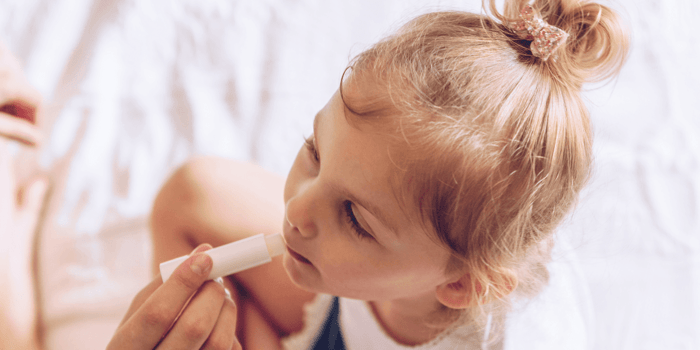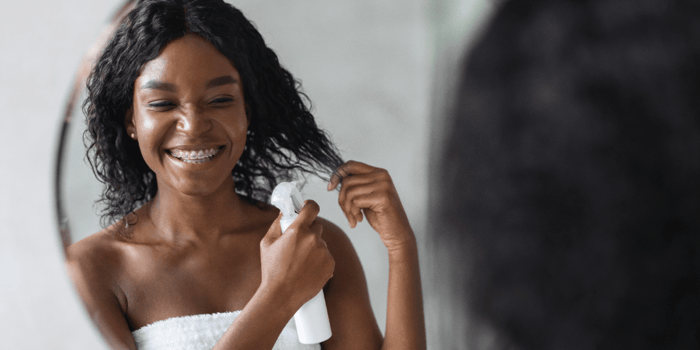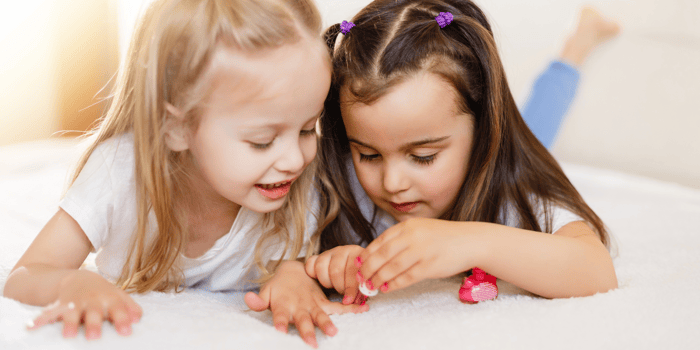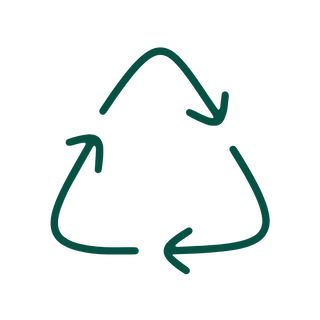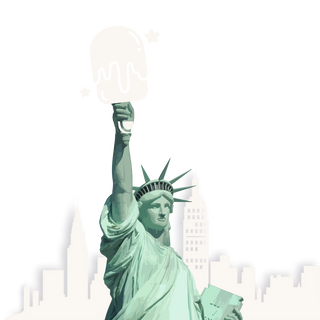Table of Contents
- Products Recommended in This Blog Post
- Introduction
- Why Ingredient Safety Matters in Children’s Hair Care
- Understanding Detangler Spray: The Basics
- The Importance of Checking Hair Product Ingredients
- Common Ingredients in Kids Hair Detangler
- The Top 6 Harmful Ingredients Commonly Found in Kids’ Hair Detanglers
- Understanding Potential Harmful Ingredients in Kids Hair Detangler
- Short-Term Effects Associated with Harmful Ingredients
- Long-Term Effects Associated with Harmful Ingredients
- How to Read and Understand Ingredient Labels on Hair Care Products
- Safer Alternatives: Choosing Detanglers Without Harmful Chemicals
- FAQs
As a mom, you’re always on the lookout for the best products for your little ones, especially when it comes to something as daily as hair care. Detangling your child’s hair can be a stressful experience, both for you and your child, especially if their hair knots easily. That’s why many of us reach for a detangler spray to make mornings smoother—but not all of these products are created equal. While some are safe and effective, others marketed as a children’s detangler may contain ingredients that irritate the scalp or impact long-term health.
Understanding which ingredients to avoid in hair care products is critical if you want to protect your child’s well-being. This blog will guide you through the top harmful ingredients commonly found in detangler sprays, why they matter, and how to spot a truly non toxic detangler that supports healthy, manageable hair without hidden risks.
Products Recommended in This Blog Post
In this guide, we’ll break down harmful ingredients found in many children’s detangler products—and highlight safer alternatives you can trust. If you’re short on time, here are the non toxic detanglers we recommend most often:
Detangler & Leave-In Conditioner for Kids
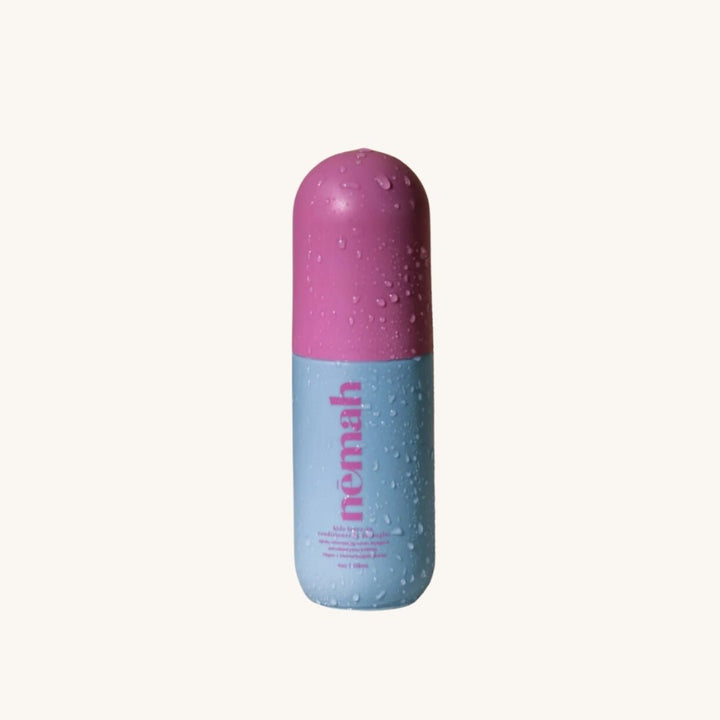
$16.99
Nemah’s Detangler & Leave-In Conditioner for Kids is a clean, lightweight formula designed to make brushing simple and stress-free. Powered by olive-derived squalane, it locks in weightless moisture to keep strands soft and manageable, while coconut oil deeply nourishes, smooths rough… read more
Knot A Chance! Children's Detangler
$14.99
Make hair care a joyful, stress-free experience with this gentle children’s detangler, a safer, all-natural alternative to mainstream products. Available in the refreshing scents of Mandarin Grape or Strawberry, this lightweight formula is enriched with native Australian Emu Apple extract,… read more
Introduction
Did you know that the innocent-looking bottle of kids’ detangler spray sitting on your bathroom shelf could contain harsh chemicals? Isn’t it unsettling to think that something designed to make your child’s hair soft and easy to comb might actually compromise their health?
We all trust labels that say “safe for children,” and we love how much simpler a children’s detangler makes our daily routine. But what if those labels aren’t telling the whole story? The reality is that many mainstream formulas rely on synthetic fragrances, silicones, or preservatives that don’t belong anywhere near a developing body.
The surge in awareness around harmful personal care ingredients has left many parents rethinking what goes on their kids’ skin and hair. Research shows that certain chemicals in children’s detanglers can cause allergic reactions, scalp irritation, and even long-term endocrine disruption.
In this guide, we’ll uncover the most concerning ingredients in detangler sprays, explain why they’re used, and highlight the potential risks. Most importantly, we’ll give you clear criteria for choosing a non toxic detangler—whether you’re buying from a trusted brand or making your own DIY version at home. Our goal is to empower you with the knowledge to make confident, informed choices, so detangling is about care and comfort, not chemicals. Let’s untangle the truth together.
Why Ingredient Safety Matters in Children’s Hair Care
Children’s scalps are not the same as adults’. Pediatric dermatology research shows that the skin barrier in early childhood is thinner, more permeable, and produces less natural oil (sebum), which makes it easier for chemicals to penetrate and cause irritation. When parents reach for a detangler spray to make brushing less painful, they may not realize that certain formulas contain synthetic fragrances, silicones, or harsh preservatives that are absorbed more quickly into a child’s system.
This is why ingredient safety matters so much in a children’s detangler. What seems like a simple shortcut to smooth, tangle-free hair can expose kids to allergens, hormone-disrupting chemicals, and long-term scalp dryness if the product relies on conventional slip agents instead of nourishing botanicals. Even low-level exposure adds up over time, especially since hair care routines happen daily or several times a week.
Choosing a non toxic detangler is about more than avoiding tears during brushing. It’s about protecting scalp health, reducing the risk of cumulative chemical exposure, and teaching children that beauty and personal care should feel safe. Parents who take the time to check labels and seek out formulas made with plant-based moisturizers, fragrance-free blends, and dermatologist-approved ingredients can feel confident that detangling is supporting—not undermining—their child’s well-being.
Understanding Detangler Spray: The Basics
A detangler spray is a specially formulated product designed to make combing through knots less painful and to reduce hair breakage in children. According to pediatric dermatologists such as Dr. Katherine Holcomb, these sprays work by “coating the hair shaft, reducing friction between strands, and making them slippery” (Holcomb, 2019). This makes brushing easier and helps prevent tears—especially for kids with longer or curly hair.
But while the purpose of a children’s detangler is to simplify grooming, the safety of that detangling process depends entirely on the ingredients inside the bottle. A study by the Environmental Working Group (EWG) in 2018 found that nearly 80% of detangling products marketed to kids contained at least one ingredient linked to health concerns. Common offenders included synthetic fragrances, parabens, and sulfates—ingredients tied to allergies, hormone disruption, and even cancer risk with long-term use.
One high-profile example was Johnson & Johnson’s No More Tangles, which came under scrutiny in 2016 for containing Quaternium-15, a preservative that releases formaldehyde. The Campaign for Safe Cosmetics reported that Quaternium-15 was associated with dermatitis, immune toxicity, and other adverse effects. Public backlash eventually forced reformulation, but the incident highlighted how everyday products—even those marketed as safe for children—can hide concerning ingredients.
It’s important to note that not every detangler spray is unsafe. Certified trichologist Penny James advises parents to look for a non toxic detangler that relies on plant-based ingredients such as aloe vera, jojoba oil, or chamomile. These natural moisturizers provide true slip and hydration without relying on harsh chemicals.
Parents should also be mindful of frequency of use. Research in the Journal of Exposure Science & Environmental Epidemiology (2020) found that children exposed daily to personal care products containing harmful chemicals showed a 20% increase in urinary metabolites compared to those with less frequent exposure. Even with safer options, moderation and label awareness are key.
Ultimately, understanding how a detangler spray works—and what ingredients to avoid—empowers parents to make informed choices. Choosing a children’s detangler made with non-toxic, plant-based formulations ensures smoother mornings without compromising long-term health.
The Importance of Checking Hair Product Ingredients
A 2018 study published in the Journal of the American Medical Association (JAMA) revealed that hair care products used primarily by children of color often contain endocrine-disrupting chemicals, some of which are not even listed on product labels (Tarrant et al., 2018). This finding underscores the importance of checking product ingredients, especially in commonly used items like a detangler spray, as well as the need for stricter regulations regarding product labeling.
Leading experts in dermatology and toxicology echo this concern. Dr. Zoe Draelos, a renowned dermatologist, emphasizes the need for consumers to be vigilant: “Hair products, especially those marketed for children, should be as gentle as possible. However, some contain harsh ingredients that can cause scalp irritation or even systemic toxicity in children.”
Similarly, Dr. Philip Landrigan, a world-renowned pediatrician and epidemiologist, advises parents to opt for the safest options—often a non toxic detangler or shampoo with the fewest ingredients—and to avoid products with synthetic fragrances or dyes, which are common sources of allergens and irritants.
You may ask why it’s essential to check ingredients when a product is labeled “safe for kids” or “hypoallergenic.” The reason is that these labels can sometimes be misleading. A study conducted by the Environmental Working Group (EWG) found that 57% of products labeled “hypoallergenic” still contained at least one known skin allergen.
In a real-world example, Johnson & Johnson faced backlash and lawsuits when it was discovered their baby products contained formaldehyde-releasing preservatives and other potentially harmful substances. This case serves as a reminder that parents should scrutinize every children’s detangler or shampoo, rather than relying solely on brand reputation.
Furthermore, certain ingredients can have long-term health impacts. Phthalates—often found in fragranced products like hair detanglers—have been linked to hormonal disruptions. A study published in Human Reproduction found that high levels of certain phthalates were associated with early puberty in girls (Wolff et al., 2008).
So, how can you navigate this complex landscape of hair product ingredients? First, look for products with a short, transparent ingredient list. This reduces the chances of exposure to harmful substances. Second, avoid products with fragrance, dyes, and parabens, which are frequent culprits of irritation. Finally, consult resources like the EWG’s Skin Deep database, which rates shampoos, conditioners, and detangler sprays based on ingredient safety.
The importance of checking hair product ingredients cannot be overstated. While many products on the market are safe to use, others still contain chemicals that may impact your child’s health. By choosing options like a non toxic detangler, parents can prioritize safety, prevent unnecessary risks, and ensure their children’s daily routines are both healthy and worry-free.
Common Ingredients in Kids Hair Detangler
The first ingredient you’ll often find in a children’s detangler is water. Water serves as the base solvent for other ingredients and is generally considered safe. On its own, it poses no risk to a child’s health, but what gets added alongside it matters greatly.
Next are surfactants. These are the compounds that give a detangler spray its slippery, comb-through texture. One common surfactant, Cetrimonium Chloride, works as a conditioning agent but has been rated a moderate health hazard by the Environmental Working Group (EWG) due to its potential for skin irritation and toxicity. Another, Stearamidopropyl Dimethylamine, has been flagged by the European Scientific Committee on Consumer Safety (SCCS) as a potential allergen.
Emollients are another common component of children’s detangler sprays. They soften and smooth the hair shaft. Examples include Glycerin and Propylene Glycol. While Glycerin is generally safe and hydrating, Propylene Glycol has been linked to irritation and allergic reactions in studies such as the Final Report on the Safety Assessment of Propylene Glycol and Polypropylene Glycols published in the Journal of the American College of Toxicology.
Fragrance appears in nearly every mainstream detangler spray. Unfortunately, “fragrance” or “parfum” is a catch-all term that can include dozens—or even hundreds—of undisclosed chemicals. According to the American Academy of Dermatology, fragrance is one of the leading causes of cosmetic contact dermatitis. This is one of the key reasons parents often seek a non toxic detangler instead.
Preservatives are another category to watch. Phenoxyethanol is widely used to extend shelf life, but the FDA has warned that it may depress the central nervous system in infants, sometimes causing vomiting and diarrhea—serious risks for the youngest users.
Real-world examples highlight the concern. Johnson’s No More Tangles detangler spray contains both fragrance and Phenoxyethanol, while SoCozy Curl Spray includes Cetrimonium Chloride and Propylene Glycol. These ingredients may pass regulatory checks, but parents should know they’ve been linked with irritation, allergies, or toxicity in peer-reviewed studies.
While some ingredients in kids’ hair detanglers are relatively safe at low concentrations, others raise legitimate health questions. This is why many families are turning toward safer alternatives and prioritizing transparency in labels. Choosing a non toxic detangler over conventional brands is not about fear—it’s about minimizing unnecessary risks and ensuring products used daily on a child’s scalp and hair are truly gentle, safe, and effective.
The Top 6 Harmful Ingredients Commonly Found in Kids’ Hair Detanglers
Choosing the right detangler spray for your child isn’t just about how well it smooths knots—it’s also about what’s inside the bottle. Many products marketed as gentle or safe for children still contain ingredients that raise concerns among dermatologists and toxicologists. Before diving deeper into each one later, here’s a quick overview of the six most concerning ingredients you’ll often find in a children’s detangler.
Sulfates (Sodium Lauryl Sulfate, Sodium Laureth Sulfate): Harsh cleansing agents that strip natural oils, leaving hair dry and scalp irritated. Research in the International Journal of Trichology (2019) shows they can also irritate eyes and lungs.
Parabens (Methylparaben, Propylparaben): Widely used preservatives that act as endocrine disruptors, interfering with hormone development in children (Journal of Dermatological Science, 2016).
Phthalates: Often hidden in “fragrance,” these chemicals are linked to hormonal disruption and developmental concerns (Environmental Health Perspectives, 2018).
Formaldehyde and formaldehyde-releasing preservatives (e.g., DMDM Hydantoin, Quaternium-15): Classified as known carcinogens that may also trigger skin reactions and allergic responses (National Cancer Institute, 2020).
Silicones (Dimethicone, Cyclopentasiloxane): Not classified as toxic but create buildup on hair and scalp, preventing true hydration and sometimes leading to irritation (American Academy of Dermatology, 2021).
Synthetic Fragrances: A leading cause of cosmetic contact dermatitis and asthma triggers, with blends that may conceal phthalates and other harmful chemicals (American Academy of Dermatology, 2019).
When evaluating a non toxic detangler, ingredient safety should matter just as much as performance. While some of these substances make hair look smoother in the short term, their long-term risks—especially for developing bodies—make them worth avoiding. A children’s detangler should leave hair soft and manageable without exposing your child to hidden chemical hazards.
Understanding Potential Harmful Ingredients in Kids Hair Detangler
When parents reach for a detangler spray, the goal is simple: make brushing painless and reduce morning stress. But what’s inside that bottle matters just as much as how it performs. A children’s detangler should ease knots without introducing chemicals that may disrupt hormones, trigger allergies, or irritate the scalp. Unfortunately, many conventional products rely on ingredients that do exactly that. Below, we’ll begin examining the most concerning categories of chemicals—starting with synthetic fragrances.
Synthetic Fragrances
One of the most common additives in kids’ hair detanglers is synthetic fragrance. According to the Environmental Working Group (EWG), synthetic fragrances rank among the top five allergens in cosmetics and are linked to asthma, skin rashes, and respiratory problems. What makes this more concerning is the lack of transparency: companies often list “fragrance” or “parfum” without disclosing the dozens—or even hundreds—of chemicals behind the label.
Dr. Anne Steinemann, a leading environmental health researcher, found that 95% of chemicals used in synthetic fragrances are derived from petroleum, including benzene derivatives and aldehydes—compounds linked to cancer, birth defects, and nervous system disorders. Similarly, the U.S. Environmental Protection Agency (EPA) reports that volatile organic compounds (VOCs) released from fragrance mixtures can cause headaches, fatigue, nausea, and even long-term organ damage with repeated exposure.
Research in the Journal of Hazardous Materials also highlights endocrine-disrupting effects from synthetic musks, a common component of fragrance blends. Children’s developing hormonal systems are particularly vulnerable, which makes the use of fragrance-heavy children’s detangler products even more concerning.
Real-world cases reinforce this risk. The Campaign for Safe Cosmetics reported that a popular kids’ detangler spray contained phthalates—chemicals added to extend fragrance life but linked to developmental and reproductive harm, including disruption of male genital development. While industry bodies like the International Fragrance Association (IFRA) maintain lists of prohibited substances, the system is largely self-regulated, and enforcement gaps mean banned compounds can still end up in consumer products.
It’s worth noting that not all fragrances pose risks. Naturally derived scents from botanicals or essential oils can be safer options, though they tend to be costlier and have a shorter shelf life. Still, if parents want to reduce risk, the safest choice is often a fragrance-free non toxic detangler—one that focuses on hydration and manageability without unnecessary chemical blends.
Reading labels carefully and choosing brands that commit to transparency is key. Until regulations improve, the responsibility falls on parents to safeguard children’s daily routines. In the next section, we’ll examine another category of chemicals to watch for in a children’s detangler: parabens.
Parabens
Parabens are among the most widely used preservatives in personal care products, including children’s detangler sprays. Their purpose is functional: preventing bacteria and mold growth to extend shelf life. But mounting scientific evidence suggests their long-term effects may outweigh these benefits.
The primary concern is that parabens act as endocrine disruptors. They mimic estrogen in the body, which can interfere with hormone balance and potentially increase the risk of breast cancer and reproductive issues. A study published in the Journal of Applied Toxicology detected parabens in human breast cancer tissue (Darbre, 2004). While the findings did not establish direct causation, they raised serious concerns about chronic exposure through everyday products.
Children may be particularly vulnerable. According to Dr. Julia Brody of the Silent Spring Institute, early-life exposure to hormone-disrupting chemicals can set the stage for lifelong health impacts. This is why experts like Dr. Phillipa Darbeshire, a toxicologist, caution that even though parabens serve a functional purpose, “we cannot overlook the potential health implications associated with their long-term exposure.”
The issue has been underscored in real-world controversies. In 2012, Johnson & Johnson faced public backlash for using parabens and other concerning ingredients in baby products, eventually reformulating to remove them. Data from the Environmental Working Group (EWG) highlights how widespread they remain: over 60% of products in their Skin Deep database contain parabens. Moreover, not all parabens carry the same risk—propylparaben and butylparaben are considered more estrogenic than methylparaben or ethylparaben, according to the European Commission’s Scientific Committee on Consumer Safety.
Given these uncertainties, many scientists and advocacy groups recommend applying the precautionary principle—choosing paraben-free options wherever possible. The good news is that safer alternatives, such as potassium sorbate and radish root ferment, are increasingly available. For parents looking for a truly non toxic detangler, scanning ingredient lists for parabens—especially propyl- and butylparaben—is a critical step.
Sulfates (Sodium Lauryl Sulfate and Sodium Laureth Sulfate)
Sulfates such as Sodium Lauryl Sulfate (SLS) and Sodium Laureth Sulfate (SLES) are among the most common foaming agents used in shampoos, conditioners, and even detangler sprays. They create lather and help break down dirt and oil, but their effectiveness as cleansers comes with significant drawbacks. Research from the International Journal of Toxicology (American College of Toxicology, 1983) found that SLS can cause irritation at concentrations as low as 0.5%, with severity increasing as concentration rises. This raises red flags when you consider that many children’s detanglers and shampoos contain levels far higher than that.
Dermatologists, including Dr. Zoe Draelos, have noted that SLS is particularly problematic for sensitive skin, often leading to rashes, dryness, and redness (Draelos, 2010). Since children’s scalps are thinner and more permeable than adults’, these effects can be magnified. The Environmental Working Group (EWG) has also rated SLS as a moderate to high hazard, citing potential links to organ toxicity, endocrine disruption, and reproductive concerns.
The risks are not just theoretical. Johnson & Johnson faced intense scrutiny in 2014 for including SLS in baby care products, ultimately reformulating by 2015 after consumer backlash. This case illustrates the growing awareness among parents about the need for safer alternatives. While the Cosmetic Ingredient Review (CIR) panel has deemed SLS safe in products designed for brief, rinse-off use, that safety assessment does not align with the daily or leave-in exposure often associated with children’s detangler products.
For parents, the takeaway is clear: if you want a truly non toxic detangler, it’s best to avoid sulfates altogether. Instead, look for children’s detangler formulas that rely on plant-derived surfactants such as cocamidopropyl betaine or natural saponins, which cleanse gently without stripping natural oils or irritating delicate scalps.
Phthalates
Phthalates—pronounced thah-lates—are a class of chemicals frequently used in personal care products, including children’s detanglers. In a detangler spray, they serve as solvents and fragrance fixatives, helping the formula spread evenly and making the scent last longer. While these functions make products more appealing, the potential health costs are significant.
The National Institute of Environmental Health Sciences (NIEHS) reports that phthalates disrupt hormone production, which can contribute to reproductive and developmental problems, particularly in boys (NIEHS, 2019). Similarly, the U.S. Centers for Disease Control and Prevention (CDC) links phthalate exposure in children to early puberty, obesity, and neurological issues. Pediatrician and environmental health researcher Dr. Leo Trasande warns that “even low levels of phthalates can cause harm,” emphasizing that children’s developing systems are especially vulnerable (Trasande, 2019).
These risks are compounded by how common phthalates are. An Environmental Working Group (EWG) study in 2008 found them in 75% of personal care products tested—even when they were not listed on the label. Because U.S. regulations allow manufacturers to hide phthalates under the generic term “fragrance,” parents cannot always spot them on ingredient lists. Dr. Sheela Sathyanarayana of the University of Washington stresses that cumulative exposure across multiple products makes this issue more serious than manufacturers often acknowledge.
Public pressure has led to change. In 2012, Johnson & Johnson pledged to remove certain phthalates from its baby products following advocacy campaigns and mounting scientific evidence (Reuters, 2012). Brands like The Honest Company have taken an even stronger stance, committing to never include phthalates in their formulas. Yet, despite these steps, many conventional children’s detanglers still rely on these chemicals.
For parents seeking a non toxic detangler, the solution is to choose fragrance-free or clearly labeled phthalate-free options. While phthalates make detanglers smell pleasant and glide easily, the evidence shows they introduce unnecessary risks. A safer children’s detangler should prioritize hydration and manageability—not chemical shortcuts.
Formaldehyde-Releasing Preservatives
Formaldehyde-releasing preservatives are a class of chemicals designed to extend product shelf life by slowly releasing small amounts of formaldehyde over time. While this may prevent bacterial growth, it also introduces serious health concerns. According to the American Cancer Society, formaldehyde is classified as a known human carcinogen by the International Agency for Research on Cancer (IARC) and has been linked to leukemia and certain brain cancers (American Cancer Society, 2016).
These preservatives appear in a wide range of cosmetics and personal care items, including some children’s detanglers. A report from the Environmental Working Group (EWG) found that more than 20% of products on the U.S. market contained at least one formaldehyde releaser, though they are rarely labeled as such. Common names to watch for include DMDM hydantoin, imidazolidinyl urea, diazolidinyl urea, quaternium-15, and bronopol.
The risks are not hypothetical. Johnson & Johnson’s iconic No More Tears baby shampoo once contained quaternium-15, prompting widespread backlash in 2011 after coverage in The New York Times. By 2014, the company reformulated to remove formaldehyde-releasing preservatives. Yet many mainstream brands still rely on them. Dermatologists like Dr. Tanya Kormeili warn that “prolonged exposure to formaldehyde can cause irritation, allergic reactions, and increase cancer risk,” especially in children whose bodies are smaller and more susceptible to cumulative exposure.
While U.S. FDA regulations still permit the use of formaldehyde releasers in cosmetics, responsibility falls on manufacturers to ensure safety—a standard that is not always met. For parents, the best safeguard is vigilance: check ingredient lists for these hidden preservatives and opt for formaldehyde-free alternatives. A truly non toxic detangler or fragrance-free detangler spray should soften and protect hair without exposing children to chemicals known to carry long-term health risks.
Silicones
Silicones, such as dimethicone and cyclopentasiloxane, are frequently added to kids’ hair products to give a smooth, slippery feel that makes combing easier. In a detangler spray, they coat the hair shaft to reduce friction and create the illusion of soft, frizz-free strands. While this effect may look appealing, dermatology experts caution that the long-term consequences of silicone use in a children’s detangler deserve more scrutiny.
The American Academy of Dermatology notes that occlusive ingredients like silicones can contribute to scalp sensitivity, particularly in children with developing skin (AAD, 2021). By forming a water-resistant film, silicones trap dirt, sweat, and sebum, leading to buildup and clogged follicles. Over time, this cycle can result in scalp irritation, dryness, or even weakened hair. Pediatric dermatologist Dr. Ava Shamban explains that “when used regularly, silicones like dimethicone can build up on the scalp, creating imbalance and sometimes breakage” (Shamban, 2021).
There are also environmental considerations. Certain silicones, including D4 (cyclotetrasiloxane) and D5 (cyclopentasiloxane), have been flagged by the European Chemicals Agency as persistent and bioaccumulative in aquatic ecosystems. This raises concerns not just for children’s health but for broader sustainability goals as well.
For parents seeking a non toxic detangler, the solution is to avoid products listing “-cone,” “-conol,” or “-siloxane” on the label. Brands such as No Nasties Kids and The Honest Company have demonstrated that aloe vera, flaxseed extract, and plant-based fatty alcohols can provide slip and manageability without the risks associated with synthetic coatings. A silicone-free children’s detangler does more than untangle hair—it supports scalp health, reduces the need for harsh cleansers, and models safer choices for the next generation.
Putting It All in Perspective
While it’s essential to recognize the risks of harmful ingredients like sulfates, parabens, phthalates, formaldehyde releasers, silicones, and synthetic fragrances, it’s also worth remembering that not every chemical in a detangler spray is unsafe. For example, citric acid is frequently used in children’s detanglers to balance pH and is considered safe in cosmetic formulations. Ingredients like this play a valuable role in product stability without compromising safety.
Short-Term Effects Associated with Harmful Ingredients
Even before considering the long-term risks, parents should be aware of the immediate reactions that certain ingredients in a children’s detangler can cause. Dermatologists, pediatricians, and toxicologists consistently warn that products marketed as gentle are not always free from side effects when used on sensitive young skin.
Skin irritation is the most common short-term concern. Reports from the American Academy of Dermatology (AAD, 2018) show a rising trend in cosmetic-related skin problems in children, with hair care products like detangler sprays cited as frequent culprits. Artificial fragrances, dyes, and certain preservatives can trigger redness, itching, rashes, or even blistering within hours of use.
Eye irritation is another well-documented issue. Pediatric ophthalmologist Dr. Robert Roberts notes that surfactants like Sodium Lauryl Sulfate (SLS) and Sodium Laureth Sulfate (SLES)—sometimes used in children’s detanglers—can cause stinging, redness, and temporary blurred vision when they come into contact with the eyes. For a product designed to make grooming easier, this risk is particularly concerning.
Respiratory effects have also been linked to volatile organic compounds (VOCs) released from fragranced formulations. Research by the Environmental Working Group (EWG, 2016) found that VOC exposure in children can trigger coughing, wheezing, or asthma-like reactions. For kids with pre-existing respiratory conditions, even small amounts may be enough to spark symptoms.
One case from California in 2017 illustrates the risks. A young girl developed severe rashes and breathing problems after using a fragranced children’s detangler containing artificial dyes and preservatives. Pediatric and dermatology evaluations concluded that the product’s ingredients were the likely cause—underscoring how quickly these issues can arise.
Dr. Amy Wechsler, a board-certified dermatologist and psychiatrist, explains why these reactions are so common: “Children’s skin is thinner and more permeable than adults’, making them far more susceptible to irritation. Even limited or short-term exposure can lead to visible reactions.”
Understanding these immediate effects reinforces the importance of choosing a non toxic detangler. While short-term symptoms like redness or stinging may seem temporary, they are signals that a child’s skin, eyes, or lungs are under unnecessary stress. For parents, the best step forward is to avoid products with fragrances, sulfates, and harsh preservatives—and instead look for clean, transparent formulations designed with sensitive skin in mind.
Long-Term Effects Associated with Harmful Ingredients
While redness, rashes, or eye irritation are troubling in the short term, the long-term effects of harmful chemicals in a children’s detangler can be far more concerning. These effects often build silently over months or years of repeated use, making vigilance essential for parents.
Pediatrician and epidemiologist Dr. Philip Landrigan of the Icahn School of Medicine at Mount Sinai warns that chemicals in personal care products—including popular detangler sprays—can disrupt hormones and contribute to developmental problems or even cancer (Landrigan, 2018). Phthalates and parabens, commonly used in hair detanglers, are classified as endocrine disruptors by the National Institute of Environmental Health Sciences (NIEHS). These substances mimic or block natural hormones, interfering with development of the brain, reproductive system, and immune function.
Several studies reinforce these risks. A 2016 study in the Journal of Clinical Endocrinology and Metabolism found that children with higher phthalate exposure were significantly more likely to develop asthma. Research published in Environmental Health Perspectives (2010) linked prenatal phthalate exposure with altered cognitive outcomes in children. Parabens, too, have been detected in human breast tissue and are suspected contributors to hormone-related cancers, according to findings in the Journal of Applied Toxicology.
The Environmental Working Group (EWG) has reported that 1 in 8 of 50,000 personal care products, including children’s detanglers, contained at least one chemical classified as a potential human carcinogen. This means the average child may face low-level, repeated exposures from products used daily. Because children’s bodies absorb chemicals at a higher rate relative to body weight, and because their detoxification systems are still immature, even “small” exposures carry more risk (American Academy of Pediatrics).
Real-world cases highlight these dangers. In 2018, the U.S. Public Interest Research Group (PIRG) discovered asbestos—a known carcinogen—in a children’s detangler spray. The product was pulled from store shelves only after exposure had already occurred, underscoring the gaps in oversight and regulation.
These findings underscore why choosing a non toxic detangler is not just a preference but a protective measure. The long-term risks associated with hidden ingredients are serious, and by switching to transparent, clean formulations, parents can reduce their child’s cumulative chemical burden while still making hair care easy and stress-free.
How to Read and Understand Ingredient Labels on Hair Care Products
For many parents, picking up a children’s detangler or detangler spray feels routine—until you turn the bottle around. Ingredient labels can look like a jumble of unpronounceable words, but learning how to decode them is the most important step toward choosing a non toxic detangler that truly protects your child.
Start by looking at the first five ingredients. These are present in the highest concentrations and define the core of the product. If “water” is followed by recognizable plant-based moisturizers like aloe or glycerin, that’s generally a positive sign. But if harsh surfactants or synthetic chemicals appear near the top, proceed with caution.
Be especially wary of vague terms like “fragrance” or “parfum.” These umbrella terms can conceal dozens of undisclosed chemicals, often including phthalates, which are documented endocrine disruptors (NIEHS, 2019). A children’s detangler with a pleasant scent may actually be exposing your child to hidden toxins linked to asthma, hormone disruption, or allergic reactions.
Certifications can also serve as a shortcut for parents. Labels like EWG VERIFIED™ or Certified Organic indicate that the product has undergone third-party review and meets higher safety standards (Environmental Working Group, 2022). While no certification replaces careful label reading, they provide added assurance when choosing a daily-use product like a detangler spray.
Finally, use tools to your advantage. The Environmental Working Group’s Skin Deep database and mobile apps like Think Dirty or Yuka rate the safety of cosmetic ingredients, making it easier to identify a truly non toxic detangler. A quick check can turn confusion into confidence, helping you avoid unnecessary risks and focus on products that nurture your child’s scalp and hair safely.
Safer Alternatives: Choosing Detanglers Without Harmful Chemicals
When shopping for a children’s detangler, label-reading is your strongest tool. Safe choices will clearly state that they are free from parabens, sulfates, silicones, and formaldehyde-releasing preservatives—common culprits behind irritation and long-term health concerns. Instead of these harsh chemicals, look for natural moisturizers and botanicals such as aloe vera, jojoba oil, or shea butter, which help soften and smooth hair safely. Research from the Environmental Working Group (2023) confirms that many effective non toxic detanglers rely on plant-based ingredients to reduce knots without compromising scalp health.
Popsicle Beauty Club makes it simple by curating only formulas that meet the strictest safety standards for kids. Among the top recommendations:
Detangler & Leave-In Conditioner for Kids

$16.99
Nemah’s Detangler & Leave-In Conditioner for Kids is a clean, lightweight formula designed to make brushing simple and stress-free. Powered by olive-derived squalane, it locks in weightless moisture to keep strands soft and manageable, while coconut oil deeply nourishes, smooths rough… read more
Knot A Chance! Children's Detangler
$14.99
Make hair care a joyful, stress-free experience with this gentle children’s detangler, a safer, all-natural alternative to mainstream products. Available in the refreshing scents of Mandarin Grape or Strawberry, this lightweight formula is enriched with native Australian Emu Apple extract,… read more
Still, even with a non toxic detangler, it’s wise to patch-test new products on your child’s skin, since natural ingredients can occasionally trigger sensitivities (American Academy of Dermatology, 2023).
Lastly, don’t underestimate the value of parent-to-parent insights. Online communities of moms often share firsthand reviews of children’s detangler products that worked—or didn’t—helping you skip trial and error. And remember, safer products work best when they’re paired with consistent, age-appropriate routines. For practical ideas, see our guide to fun self-care routines for 5-year-olds with natural products.
By combining science-backed label scrutiny with trusted recommendations, you can confidently choose detangler spray formulas that keep mornings stress-free and your child’s hair healthy.
DIY Natural Hair Detangler Recipes for Busy Moms
For moms who want full control over what goes onto their child’s scalp, making a non toxic detangler at home is a practical and cost-effective option. DIY recipes are simple to prepare, rely on safe ingredients, and can be just as effective as store-bought detangler sprays. Plus, creating them with your child can become a fun bonding activity that teaches the value of natural self-care.
One easy recipe combines 1 tablespoon of a clean, child-safe conditioner with 1 cup of distilled water, poured into a spray bottle. Add a few drops of chamomile or lavender essential oil for a soothing scent. This homemade detangler spray can be misted onto damp hair after baths, making knots easier to comb through without harsh chemicals (DIY Natural, 2023).
Another option is blending aloe vera gel with distilled water. Aloe naturally conditions hair, reducing static and easing tangles. For extra hydration, add a teaspoon of vegetable glycerin—an ingredient that draws moisture to the hair and keeps strands soft and manageable (Healthline, 2022).
For parents dealing with stubborn buildup, apple cider vinegar is an excellent choice. Mix one part vinegar with three parts water and spray it lightly on hair. The acidity smooths the cuticle layer, reducing friction between strands and helping knots slide apart. Be sure to rinse thoroughly to prevent any lingering vinegar scent (Natural Living Ideas, 2022).
Always patch test any homemade children’s detangler before regular use, as even natural ingredients can occasionally trigger sensitivities. With these DIY solutions, you can create a safe detangler spray that’s free from parabens, silicones, and artificial fragrances—making bath time smoother, healthier, and stress-free.
Bringing it All Together
The potential health effects of harmful ingredients in kids’ hair detanglers—both short- and long-term—are a growing concern. While a children’s detangler may seem like a simple fix for knots, parents need to look beyond the label. Choosing a non toxic detangler helps protect delicate skin and hair from irritation, hormone disruption, and other risks that can arise from repeated exposure to synthetic chemicals.
Safer alternatives exist. By reaching for a detangler spray made with plant-based moisturizers like aloe vera or coconut oil, or even mixing up your own DIY formula, you can simplify grooming without sacrificing safety. The simplest formulations are often the safest, and transparent labeling makes it easier for parents to shop with confidence.
As busy moms, our time and resources are limited, but our children’s health is non-negotiable. Leveraging community knowledge, prioritizing products with certifications like EWG VERIFIED™, and opting for brands committed to ingredient transparency are practical steps we can take today. Every choice—whether it’s picking a cleaner conditioner, avoiding synthetic fragrance, or choosing a non toxic detangler—adds up to healthier routines and stronger peace of mind. Stay informed, stay engaged, and trust your instincts when it comes to your child’s care.
To learn more about choosing the safest shampoos, conditioners, and detanglers for kids, visit Non-Toxic Hair Care for Kids for a complete guide to gentle, chemical-free hair care.

About the Author: Rebecca is a Penn State–educated entrepreneur and mom of six, with a career spanning renewable energy, hydrogen fuel innovation, and plant-based wellness. She’s the founder of Popsicle Beauty Club, a clean, non-toxic self-care brand for kids rooted in ingredient safety and environmental responsibility. To learn more or connect, you can find Rebecca on LinkedIn.
FAQs
What makes a detangler spray safe for kids?
A safe detangler spray should be free from parabens, sulfates, silicones, synthetic fragrances, and formaldehyde-releasing preservatives. These chemicals can irritate the scalp, disrupt hormones, or cause long-term health concerns. Look for a non toxic detangler that uses natural moisturizers like aloe vera, jojoba oil, or coconut-derived conditioners to soften knots without harmful side effects.
Can I use an adult detangler on my child’s hair?
It’s best not to. Adult hair products often contain harsher surfactants, silicones, and synthetic fragrances that can overwhelm a child’s thinner, more permeable scalp. A children’s detangler is specifically formulated to be gentler and safer for developing skin and hair. Using adult products may increase the risk of irritation, dryness, or chemical exposure.
How often should I use a detangler spray on my child’s hair?
Frequency depends on your child’s hair type and activity level. For children with long, curly, or fine hair, using a non toxic detangler daily or after baths can help prevent painful knots. For shorter or straighter hair, every few days may be enough. Always start with the smallest amount necessary—less is often more when it comes to children’s hair.
Are DIY recipes as effective as store-bought detanglers?
Yes—if formulated properly. A simple DIY non toxic detangler made from water, aloe vera, and a small amount of clean conditioner can be just as effective as commercial sprays. However, DIY recipes lack preservatives, so they must be stored in the fridge and used quickly. For busy moms, a high-quality, pre-formulated detangler spray can be more convenient while still ensuring safety.
What certifications should I look for on children’s detanglers?
Look for trusted third-party verifications such as EWG VERIFIED™, USDA Organic, or dermatology-tested and hypoallergenic claims. These certifications indicate the product meets higher safety standards. While labels like “gentle” or “kid-safe” can be misleading, certifications provide an added layer of accountability when choosing a non toxic detangler for your child.
What if my child has eczema or sensitive skin—can they still use detangler spray?
Yes, but you’ll need to be extra cautious. Choose a fragrance-free children’s detangler with a short, transparent ingredient list. Ingredients like aloe vera, chamomile, or sunflower seed oil are often well-tolerated. Always patch test first on a small area of skin to ensure there’s no reaction before applying it more broadly.


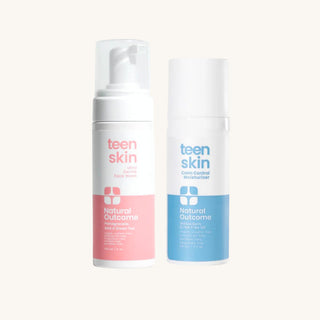
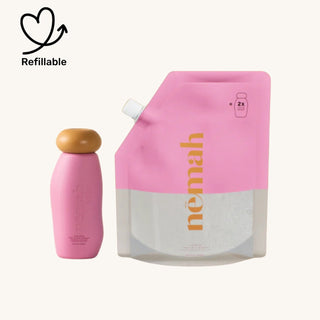
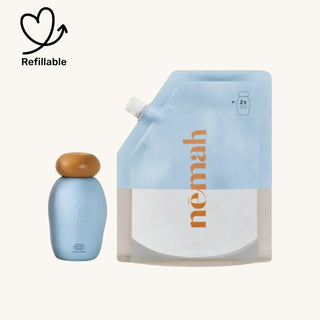
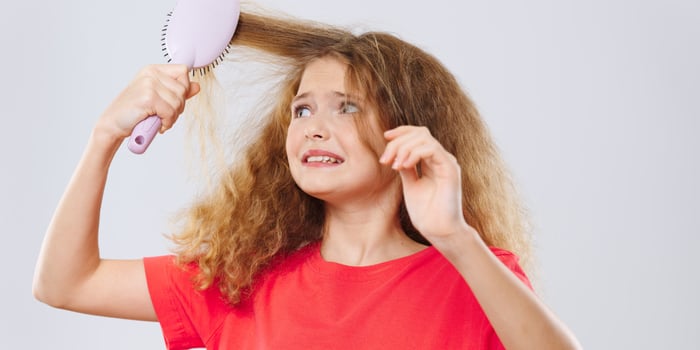
 Assets (13).png)
